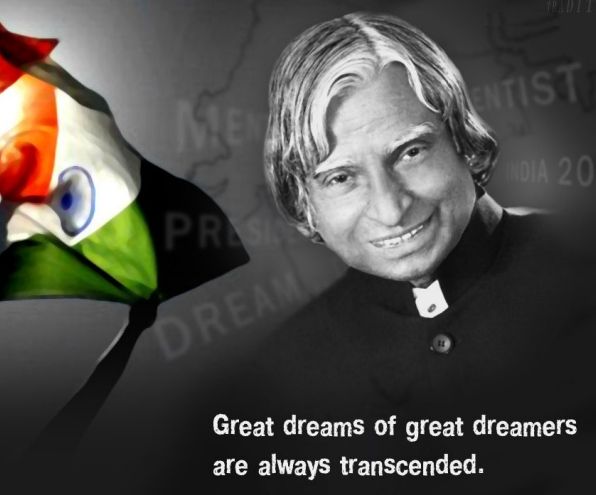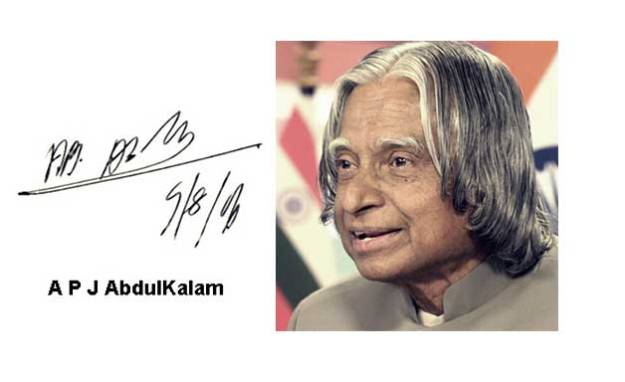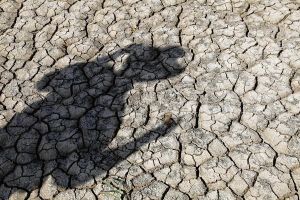
Life and Time Are The World’s Best Teachers
Dr. A. P. J. Abdul Kalam, the 11th President of India, from 2002 to 2007, passed away on July 27 in Shillong as he collapsed during a lecture at the Indian Institute of Management-Shillong (IIM-S) around 6:30 pm.
“The nation has lost a great hero who was People’s President during his lifetime and shall remain so even after his death,” mourned President Pranab Mukherjee as he condoled the death of Kalam.
Dr APJ Abdul Kalam, popularly known as the Missile Man of India was conferred Bharat Ratna in 1997.
Before holding the position of President, Kalam was an aeronautical engineer with DRDO and ISRO. Due to his great contributions in the field of missile and aerospace technologies, he was popularly known as the Missile Man of India. He played major role in India’s Pokhran-II nuclear tests in 1998. He was also the author of the some of the best-sellers like Wings of Fire, Ignited Minds: Unleashing the Power Within India and India 2020. He had always talked about his vision of transforming India into a developed nation by 2020. He had also supported India’s nuclear weapons and missiles program.
Here are 10 points that all of us should know about Dr. APJ Abdul Kalam.
1. His father was a devout Muslim who used to rent out boats to local fishermen and was also good friend of Hindu religious leaders and the school teachers at Rameshwaram.
2. Dr. Kalam was a scholar of Thirukkural (a classic of couplets or Kurals). In most of his speeches, he quoted at least one kural.
3. He had written many inspirational books, like Wings of Fire which aims at motivating Indian youth. “Guiding Souls: Dialogues on the Purpose of Life” revealed his spiritual side. He was also a poet. He had written some poems in Tamil also.
4. He graduated from Madras Institute of Technology in Aeronautical Engineering. He was Project Director at DRDO, where he played major role in the development of India’s first indigenous Satellite Launch Vehicle (SLV-III).
5. He was also chief executive of Integrated Guided Missile Development Programme(IGMDP), where he was involved in developing many missiles of India including “Agni” and “Prithvi”.
6. He was the Chief Scientific Adviser to Defence Minister and Secretary, Department of Defence Research & Development (July 1992 to December 1999). Pokhran-2 nuclear tests were conducted under his leadership.
7. He believed in multiple uses of technologies. He used the light weight carbon-compound material designed for Agni to make callipers for the polio affected. This carbon composite material reduced the weight of the calipers to 400 grams (from its original weight of 4kgs.)
8. On Wednesday April 29, 2009, he became the first Asian to be bestowed the Hoover Medal, America’s top engineering prize, for his outstanding contribution to public service. He had also received honorary doctorates from more than 30 universities, including the Carnegie Mellon University of United States.
9. The Government of India had honoured him with the nation’s highest civilian honours: the Padma Bhushan (1981), Padma Vibhushan (1990) and the Bharat Ratna (1997) for his contribution in ISRO and DRDO and his role as a scientific advisor to the Government of India.
10. Kalam was the third President of India to have been honoured with a Bharat Ratna before being elected to the chair of President. He was also the first scientist and first unmarried person to become the President of India.
“In the 3,000-year history of India, barring 600 years, the country has been ruled by others. If you need development, the country should witness peace and peace is ensured by strength. Missiles were developed to strengthen the country,” – Dr. APJ Abdul Kalam.
Rest In Peace – The People’s President!

